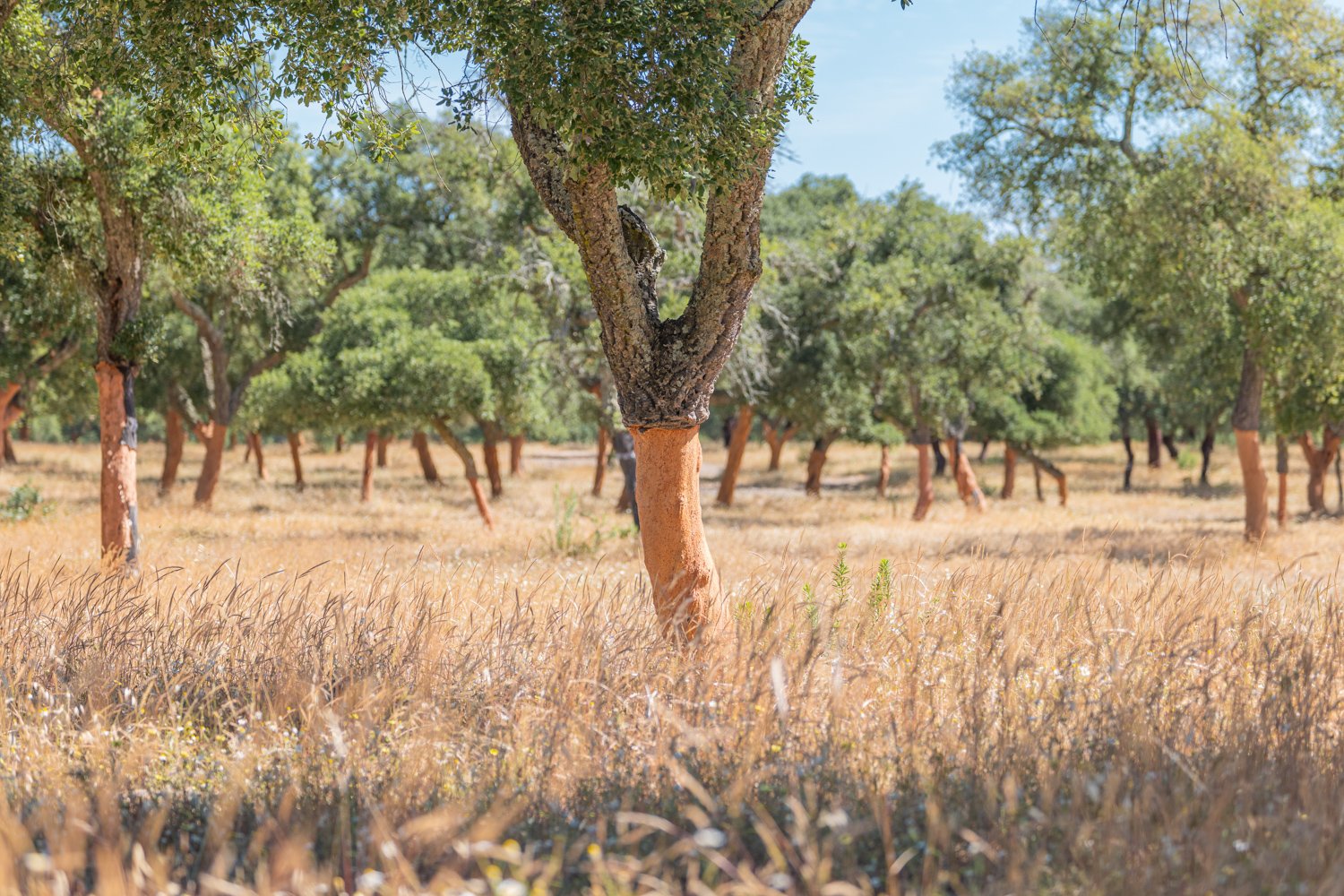The cork harvesting process
Cork is the name given to the bark of the cork oak. The cork oak, in turn, is the only plant species capable of producing cork with the highest quality, thus becoming the origin of a unique industry in the world that is vital for the sustenance of the Montado and for the Portuguese economy - so much so that cork represents 2% of the country’s exportations.
The harvesting is carried out in the Montado, in Alentejo. The Montado, a forest of cork oaks, makes up 23% of the Portuguese forest area. The Montado is also one of the 35 global biodiversity sanctuaries, housing more than 160 species of birds, 24 species of reptiles and amphibians and 37 species of mammals - among which the Iberian lynx. Every year, the Montado absorbs 14 million tons of CO2, preventing it from being released into the atmosphere.
Cork oaks live an average of 200 years. It is after the first 25 years of this long and fruitful life that the cork oak trunk begins to produce cork. In the first harvest, dubbed “desbóia”, the cork has an irregular structure and is extremely hard, making it difficult to manoeuvre. This “virgin cork” is usually used for flooring and insulation, as it is not flexible enough to be transformed into stoppers.
It is only after the third harvest that cork presents the optimal characteristics for the production of stoppers. After each harvest, the cork oak takes nine glorious years to regenerate and be able to offer its cork again, managing - on average - to witness 15 harvest over its lifetime.
Throughout the process, it is absolutely crucial to take all the necessary precautions to avoid damaging the trees. If the cork oak is damaged, it will not be able to regenerate and produce more cork. For this reason, the harvest is performed only by highly qualified professionals. The harvest is performed in six steps:
Opening: the cork is chopped vertically, through the deepest crack in the bark. At the same time, the edge of the axe is twisted to separate the cork plank from the trunk;
Separating: the edge of the axe is introduced between the strip and the inner bark, followed by a twist of the axe to conclude the split;
Diving: with an horizontal cut, the size of the board to be removed is delimited;
Extracting: the board is removed with the utmost care so that it does not break. The larger the boards, the greater their commercial value. After the extraction of the first plank, the process is repeated until all the cork is removed from the trunk;
Removing: after extracting the planks, some cork fragments remain near the base of the trunk. In order to remove any parasites that exist in the wedges of the cork oak, the harvester makes a few strokes with the eye of the axe;
Marking: at the end of the process, each tree is marked with the last digit of the year in which the harvest was carried out, so that it is possible to know when the process will be repeated.
All the extracted cork is used entirely, either through the use of leftovers for by-products or through the recycling of used cork products.



